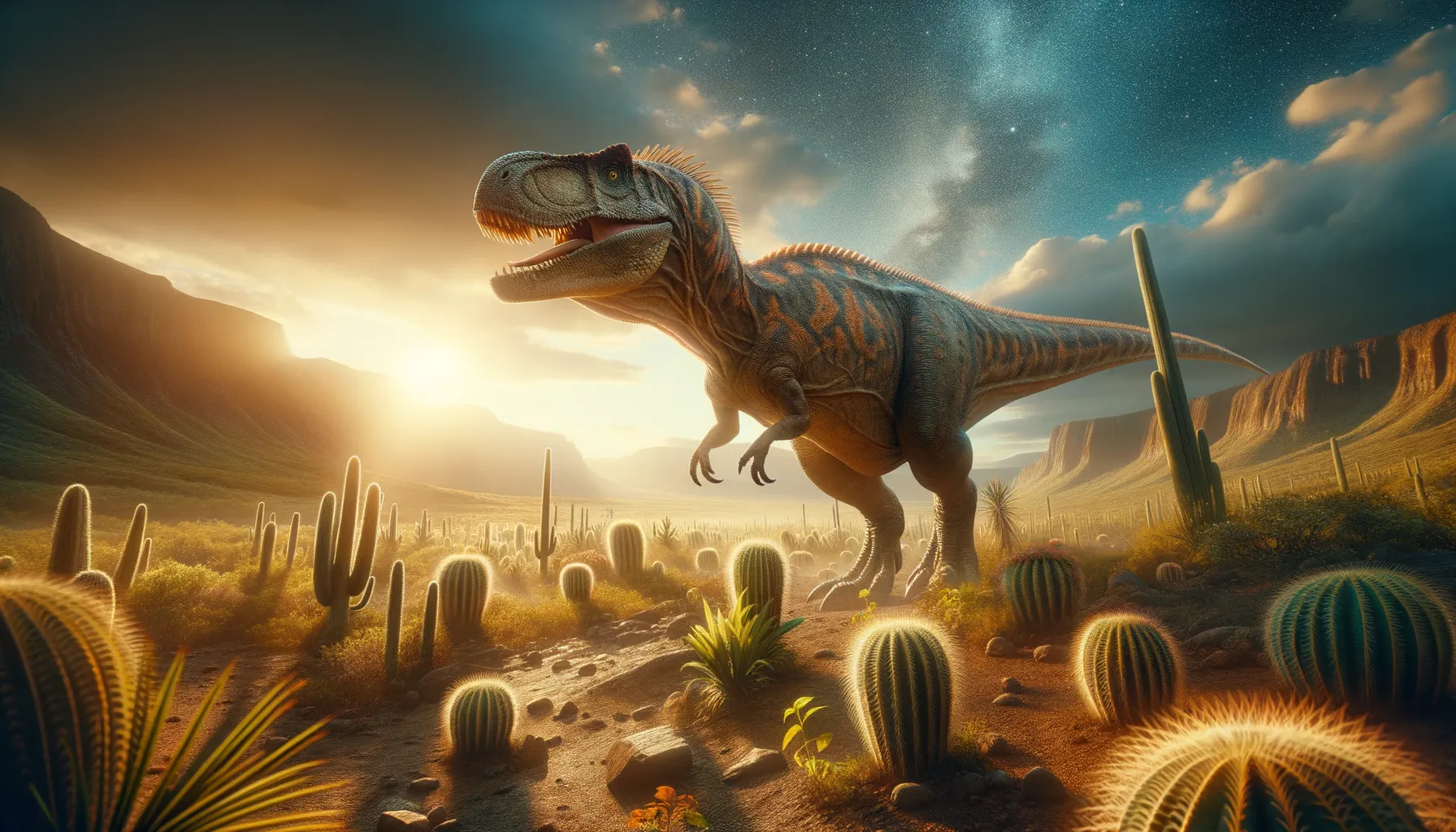
Mahuidacursor
Unlocking Cretaceous secrets in Argentina!
Period
Cretaceous
Length
Roughly 6 meters in length.
Height
About 2 meters tall at the hips.
Weight
Approximately 1,000 kilograms.
Mahuidacursor was a herbivorous dinosaur known for its impressive size and adaptive features that allowed it to thrive during the Late Cretaceous period. It belonged to the group of dinosaurs known as iguanodontians, which were widespread during that era. Its fossils provide valuable insights into its evolutionary adaptations and ecological role, highlighting its significance in the dinosaur family tree. Its discovery has contributed to our understanding of dinosaur diversity in South America.
Diet
Mahuidacursor was a herbivore, primarily feeding on lush vegetation that was abundant during the Late Cretaceous period. Its teeth and jaw structure indicate it efficiently processed plant material, making it well adapted to its environment.
Hunting
Being a herbivore, Mahuidacursor did not actively hunt but used its feeding adaptations to graze and browse on vegetation. Its strategy focused on consuming a variety of plant foods available in its habitat.
Environmental challenges
Mahuidacursor faced environmental challenges such as changing climates and vegetation patterns during the Late Cretaceous. Competition with other herbivores for food resources would have been a constant pressure. Predator threats from contemporary carnivorous dinosaurs required vigilance and possible group defense strategies.
Speed
Estimated to be slow-moving due to its size.
Lifespan
Likely lived around 20 to 30 years.
First discovery
Discovered in Argentina, dated to the Late Cretaceous.
Fun Facts
- Mahuidacursor was a plant-eating dinosaur that lived during the Late Cretaceous period, about 80 million years ago.
- This dinosaur was discovered in Argentina, in the region known as Patagonia, which is famous for its many dinosaur fossils.
- The name 'Mahuidacursor' means 'mountain runner,' reflecting its likely ability to move quickly across its environment.
- It was a relatively small dinosaur, estimated to be around 4 meters long, which is quite modest compared to some of its giant relatives.
- Mahuidacursor belonged to a group of dinosaurs known as ornithopods, which were mostly herbivorous.
- Despite being a dinosaur, Mahuidacursor was more closely related to birds than to reptiles like crocodiles.
- The discovery of Mahuidacursor helps scientists understand more about the diversity and evolution of dinosaurs in South America.
Growth and Development
Mahuidacursor likely experienced slow and steady growth, reaching its full size over several years. Its development would have included stages of juvenile vulnerability where it relied on group protection. The growth patterns would have been well-suited to its long life expectancy.
Habitat
Mahuidacursor inhabited a region rich in plant diversity, providing ample food resources. The environment would have included various terrains, from open plains to forested areas. Its adaptations suggest it was versatile in navigating these different landscapes.
Interaction with other species
Mahuidacursor coexisted with various dinosaur species, including carnivores and other herbivores. Mutual coexistence often necessitated shared watering holes and migration routes. Interactions would have ranged from passive coexistence to competitive encounters over resources.
Natural lifespan
Its natural lifespan extended up to 30 years given ideal conditions.
Reproduction
Mahuidacursor likely reproduced through egg-laying, as with other dinosaurs of its group. Nesting sites would have been strategically chosen to protect the offspring from predators. Parental care in nurturing and guarding young ones could have been present, given its social structure.
Social behaviour
Mahuidacursor may have exhibited social behavior, forming groups for feeding and protection. Such herding behavior would have facilitated collective defense against predators. Social structures could have involved group cooperation and a hierarchy based on age or size.
Fossil locations
The primary fossil evidence of Mahuidacursor has been discovered in the Patagonia region of Argentina. These fossils were key in identifying its unique adaptations and ecological role. Ongoing excavations continue to uncover more about its distribution and behavior.
